Text
Maria Pleshkevich ‘17
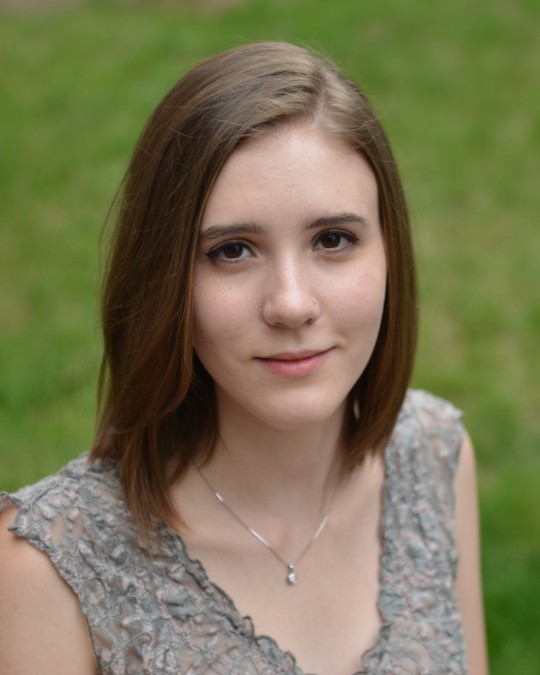
Major: Psychology and Spanish Double-major
Faculty Mentor: Dr. Mark Mattson
Title of Research: The effect of an indifference task on actor performance
Bio: Maria Pleshkevich is a Psychology major interested in studying consciousness. With a theatre, music, and academically humanities-focused background, she recognizes the importance of the arts in understanding the biological brain and would like to integrate the fields to contribute to a more comprehensive study of the mind.
Abstract: The study of consciousness, loosely defined as the study of the contents of the mind of which one is aware, has been heavily debated. One way to approach defining consciousness is through phenomenology: the study of different forms and events of consciousness. The art of acting, drama, or theatre has largely been excluded from this discussion in the scientific community. While acting has been studied widely through correlational research involving actors and certain traits, the art itself and its processes have not been examined directly. Because acting is an art that involves and requires the exploration of consciousness, its study is beneficial to form a more complete picture of the concept. This study uses a repeated measures design to investigate whether acting is more successful when utilizing a more divided or united sense of consciousness, by drawing a parallel between Ernest Hilgard's model of Divided Consciousness and the process of acting (which involves an awareness of both a real and imaginary situation at the same time). Participants were asked to perform a monologue three times, twice while doing a keyboard task. Two different sets of instructions were provided for the keyboard task, one which elicited a performance that united the two situations, and another which divided them. The dependent variables included evaluation of performance, responses on a creativity and dissociative experiences questionnaire, and responses to three open-ended qualitative questions to determine whether or not more successful performances correlated with more divided or united mindsets. Drawing parallels between acting and certain models of consciousness can help us identify which models are more accurate.
0 notes
Text
Juliana Johnson ‘17
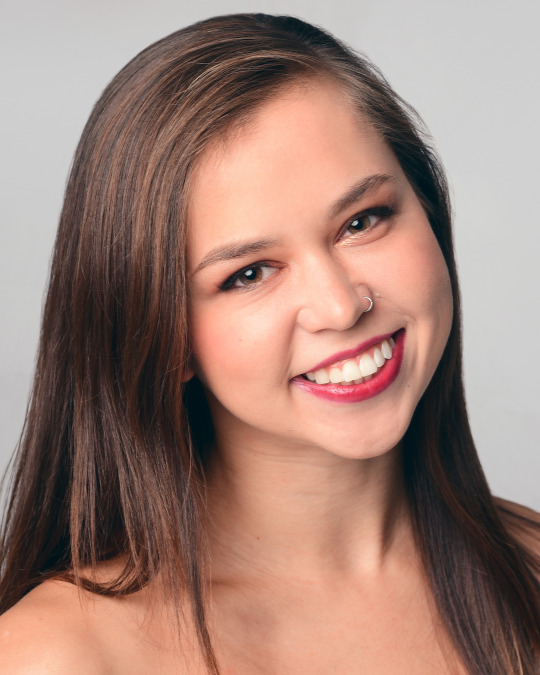
Major: Dance and Visual Arts
Faculty Mentor: Dr. Joseph Lawton
Title of Research: No Man's Land
Bio: Juliana Johnson is a dancer and designer pursuing a professional career in the arts from St. Paul, Minnesota. She uses movement and design to express her humanity and wants to continue to create immersive art experiences.
Abstract: No Man's Land will premiere Juliana Johnson's immersive art that embodies mobility and resistance against the loss of humanity and connection in our culture. Through movement and design, she explores the dualistic nature of the human experience and the navigation from darkness to light. No Man's Land is made up of a poster series, film photography, a dance film, and other design elements. A live performance of the choreography in the film will be featured on April 4th and as a part of the Arts and Research Showcase on April 6th.
0 notes
Text
Haley Williams ‘20
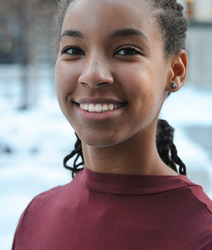
Major: Dance
Faculty Mentor: Dr. Andrew Clark
Title of Research: Untitled Seed--Movement Exploration
Partners/ Dancers: Lauryn Masciana, Lindsay Jorgensen, Ashley Simpson
Bio: Haley Williams studied dance for 13 years before beginning her training in the Ailey/Fordham BFA program this year. She hopes to continue creating and growing as a dancer, artist and person, soaking up as much knowledge as she can during her next few years at Fordham.
Abstract: Untitled Seed: Movement Exploration began with short movement phrases created without trying to develop theme or narrative. Often times when making dances, there is pressure to abide by a certain idea, emotion or motif that drives the evolution of the piece. This can be meaningful as different facets of the same concept are discovered in the process of following and deviating from the theme, however, the challenge of this project was to see how a piece could evolve without first having a specific idea or knowledge of the direction the work would move in. The movement simply came from the impulse to dance and to create. This could be misinterpreted as random, meaningless steps strung together, but while there was no conscious drive behind the formation of the phrases, the phrases are connected by the fact that they all originated in the same place. Each of these movement phrases began as a seed in my brain, from whatever emotional state I was in at the time regardless of whether I was knowledgeable of how my circumstances influenced the choreography. My ultimate purpose in this project was to determine whether any feelings, themes, or resonance could arise out of movement that was created without any such ideas in mind.
0 notes
Text
Arzu Salman ‘18 Sydney Keir ‘18
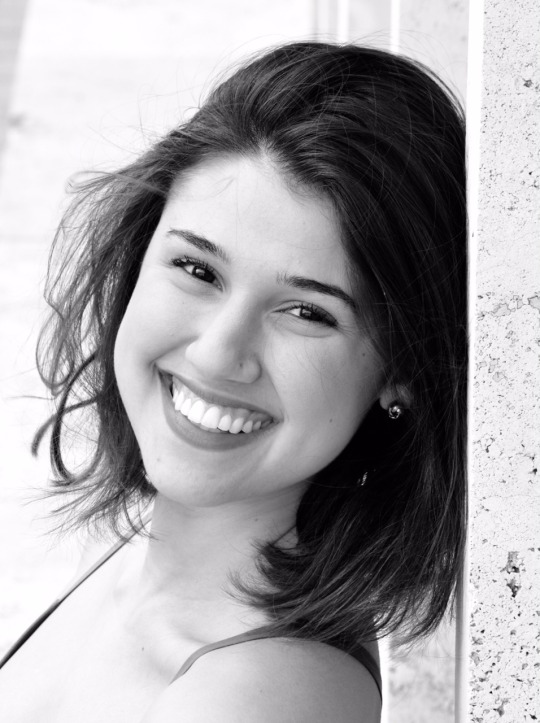

Major: Dance and Communication and Media Studies
Faculty Mentor: Kevin Predmore
Title of Research: Confrontation
Bio: Salman and Keir are both in their junior year in the Ailey/Fordham BFA program, double majoring in Communications and Media Studies. This is their second time choreographing together and both hope to pursue careers in concert dance and choreography post graduation.
Abstract:
Confrontation is a contemporary dance duet about the journey that two people go on when one person is experiencing anxiety about their current circumstances and the prospect of their future. The choreography explores the dynamics between two people coming together during a delicate time in which positivity seems lost or unattainable. The duet concludes with a spoken word piece about changing habits, having goals and trying to be the best in oneself. The piece is a testament to the importance of having support and encouragement from a loved one through difficult times.
0 notes
Text
Mikaela Brandon ‘19
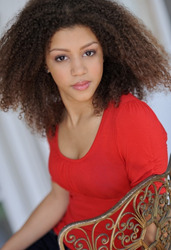
Major: Dance
Faculty Mentor: Andrew Clark
Partners/Dancers: Ellie Frechette, Tasha Hess-Neudstadt, Dominique Dobransky, Sara Crisman, Danille Marshall, Ellie Sato, Lauren Pagano, Sophia Parker, Wayne “Juice” Mackins, Meagan Cubides and Sumier Ishige
Title of Research: A Look Inside: The Passing Moments
BIo: Mikaela Brandon grew up in the suburban town of Warren, NJ. She began dancing at the age of three at a small studio in her hometown, and has pursued it ever since. She is currently a second year BFA student at the Ailey School. She had her first choreographic opportunity this year, having a piece of hers presented in Global Harmony, an annual concert put on by the Ailey School. As she becomes more interested in choreography, she is investigating the different ways in which movement can be created as well as the various formats/venues through which it can be presented. Much of her work is concept-based, and the movement is generated as the process ensues, a large part of which she owes to inspiration from her dancers. Mikaela is eager to see where her choreographic career takes her.
Abstract: My research stems from my increasing interest and fascination with the authenticity of the world around me. More specifically, city life and how so many aspects of our daily lives go unnoticed. And what it would look like if it were all presented simultaneously. My project involves the exploration of this as it connects to sights, sounds, and community. My goal is to focus on some of the most common regular activities that most of us don’t usually pay much attention to, because we’re so focused on getting to where we need to be. I see it as my attempt to slow down, take a step back and really shed light on these in-between moments in a different way. Through doing this, each moment becomes more significant. The music is all real audio from my commute(s) throughout New York, and the movement includes gestural components that the dancers have worked on in Composition class, as well as choreography learned in rehearsals. This project is definitely a work in progress, for I am just beginning to piece together the audio and visual components into a presentable format. So I hope to continue and see where it can go, maybe adding actual pieces of music as it develops. My hope for this project is to give the audience a look inside my mind through the display of my experiences and connections I make, as well as show the accessibility of dance, and the simplicity of movement as it relates to our daily lives.
0 notes
Text
Sarah Grace Houston ‘20
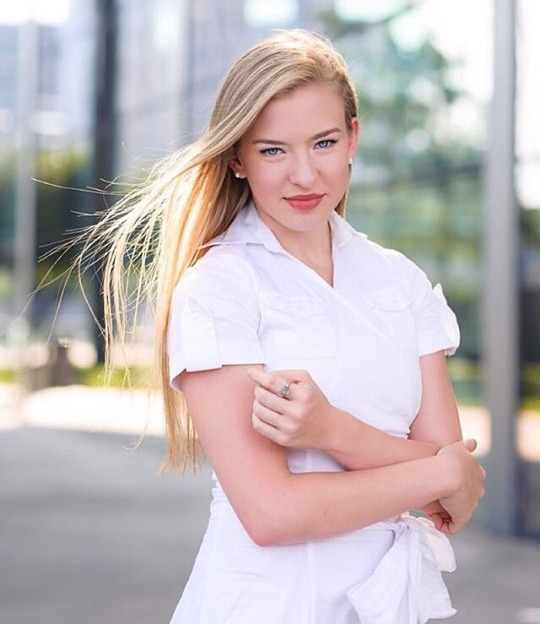
Major: Dance and Mathematics
Faculty Mentor: Dr. Andrew Clark
Partner(s): Janel Fitzgerald, Allison Welch
Title of Research: ANÁTKH/Fate
BIO: Sarah Grace Houston is a dancer with the Fordham/Ailey BFA program and a Mathematics Major. She comes from Dallas, Texas where she teachers dance classes, occasionally tutors in math, and firmly believes in mixing fields of study and not fitting into any one particular box. She hopes to go on to be in the Pilobulus dance company after graduation. Sarah Grace is also a nerd who reads classic literature in her very, very limited free time.
Abstract: Victor Hugo was inspired to write The Hunchback of Notre Dame after seeing one word carvedinto a wall at an obscure corner of an old church: ANÁTKH. A Greek word which roughlytranslates to “Fate” but implies a darker side of the concept of fate, one where even if someone isaware of the tragic end to come, they can never escape. But fate is a complex thing and is aconcept that has plagued philosophers, priests, and men for ages. Is our fate predetermined? Ordo we make our own fate? Do we have the capability to change it? Is it possible to stray awayfrom what fate has in store for us? Can we just avoid our fate all together? This project exploreswhat might happen when two people begin exactly the same way in every single aspect, fromtheir hair, their eyes, their clothes, and their movements. However, along the way one stumblesin a crucial moment and the other changes part of a crucial moment. Are their resulting fates theproduct of the choices they made? Or is the fate they receive the fate that was originally in storefor them, and was every motion and choice made along the way pre-destined?
0 notes
Text
Julia Horner ‘17
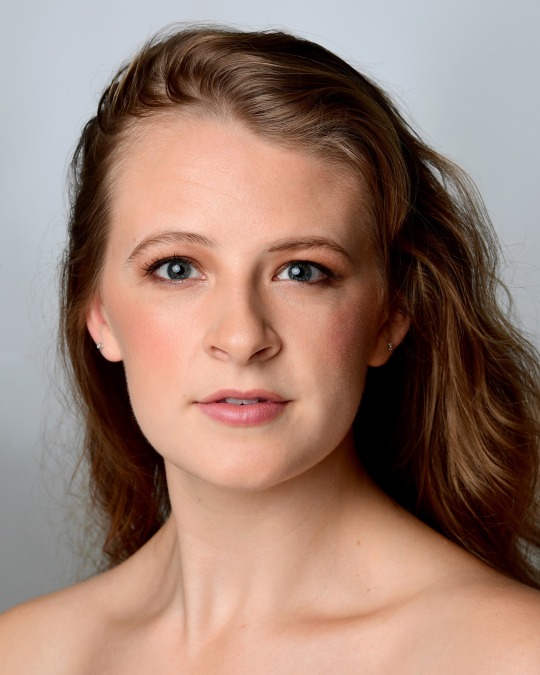
Major: Dance and Women and Gender Studies
Faculty Mentor: Ayala Fader
Partners/Dancers: Sydney Thornell, Tasha Hess-Neudstadt, Malerie Dempster, Surya Bedinger, Arzu Salman. Jessica Son, Mikaela Brandon, Ellie Frechette, Joslin Vezeau, Shantelle Rush
Title of Research: “Protesting Bodies”
Bio: Julia Hallissey Horner is a senior in the Ailey/Fordham BFA Program, originating from Cleveland, Ohio. Throughout her time in the BFA program, she has bridged her dance and Women/Gender Studies double major, finding ways to connect activism, outreach, and education to movement and art.
Abstract: Throughout my time at the Ailey School and Fordham University, I have become interested in the ways dance affects humanity and how humanity affects dance. I have been able to explore these connections through my double major in Women/Gender Studies at Fordham along with my dance classes. I have begun to look at the connections between movement, art, and social injustices, whether those injustices pertain to gender, religion, class, sexuality, or race. I believe that any kind of oppression or injustice has a physical effect in our bodies. As humans we are each our own biographies, being shaped by and documenting our experiences, emotions, and relationships. As artists, and especially as movers we use these experiences, whether knowingly or unknowingly, in our art and movement. I believe dance is the most important way to communicate culture and history because movement and body language are the most basic kinds of communication. Dance can transcend cultural barriers and language barriers. I also believe it is therefore the best way to push change. I have written a senior thesis exploring the relationships between non-violent social activism and dance/improvisational movement. I look at how race and gender affect women and their dance work, specifically focusing on Katherine Dunham and Pearl Primus. I wanted to discover how art is used to create change when governing systems are no longer working for their people. Does art help people push boundaries, and is dance the most effective kind of art form to create social change? I then used my research to develop an independent study choreographic work that shows the connections between activism, community organizing and the body. The work has four sections- Citizens, Dehumanization (The Cause and The Effect), Protesting Bodies, and Organizing Bodies/The March. Citizens explores our dependence on one another and the way we develop connections and relationships. Dehumanization, The Cause depicts the coercive and violent force that society has on its citizens, and how it pushes people to conform to norms, and squish individuality. I wanted to explore how we are able to dehumanize people that are different from us. The Effect part looks at how the body reacts in situations of dehumanization. I believe oppression physically manifests itself in the body and causes neuroses, sadness, hopelessness, frustration, etc. This then led to the section Protesting Bodies where we explored what bodies do when they can take no more oppression, and their bodies physically protest it. I explored concepts of individual desire for self-empowerment and freedom. These solos or duets/trios/etc. then led to the final section Organizing Bodies/The March. This section reflects the importance the organization of forward thinking people who are dedicated to change. There is power in organizing our communities and create common goals in order to change our worlds.
0 notes
Text
Sanjana Rajagopal ‘18

Major: Philosophy and Communications and Media Studies
Faculty Mentor: Dr. Amy Seymour
Title of Research: A Dark Philosophy
Bio: Sanjana Rajagopal is a double major in Philosophy and Media/Communications at FCLC. She will be applying to graduate school in the fall, with an eye towards conducting research in the fields of philosophy of religion and metaphysics. In addition to her aspirations in academia, Sanjana is also a writer who has won a number of regional awards for her poetry, and hopes to one day publish her own book
Abstract: A Dark Philosophy is a creative writing project that features a series of poems written over the course of two semesters. These poems were primarily inspired by three different philosophy courses: Philosophy of Space & Time and my Independent Study titled 'Free Will and God' (both of which are ongoing classes conducted under Dr. Amy Seymour) as well as Martin Heidegger: Being and Time (which I was enrolled in this past fall with Dr. Crina Gschwandtner).
The poems featured here come into conversation with material discussed in the aforementioned courses; exploring topics like time, love, freedom, God, and the nature of existence.
Two of the pieces in this collection (The Argument From Intelligent Design and The Free Will Defense) will be published in the forthcoming edition of Fordham's comparative literature journal, Bricolage, this April.
1 note
·
View note
Text
Katrina Bernhardt ‘17
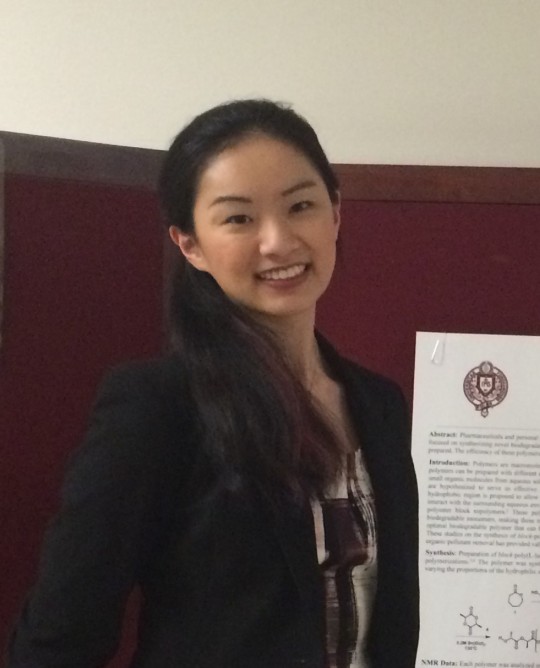
Major: Chemistry
Faculty Mentor: Dr. Amy M. Balija
Title of Research: Novel linear block copolymer, block-poly(lactide)-block-poly(caprolactone)-block-poly(lactide), as an approach to mitigate organic water pollution
Bio: Katrina Bernhardt grew up in New York City and hopes to have a career in Consumer Products amp;. She has been conducting research in polymer chemistry for about two years, and she has presented this research at Fordham and American Chemical Society symposiums. After graduation in May, she will be attending Columbia University in pursuit of an M.S. in Chemical Engineering.
Abstract:
Current conventional methods of water treatment do not remove water-soluble organic pollutants effectively. Removal of these pollutants using conventional polymers has garnered much interest recently. Research in the Balija group focuses on synthesizing biodegradable and sustainable linear block copolymers that can efficiently remove organic pollutants from water compared with known polymeric systems. Previous research has shown that the hydrophobicity of the monomers used to prepare the polymers is directly related to the efficacy of the polymer in pollutant removal. This study focuses on the synthesis and characterization of block-poly(lactide)-block-poly(caprolactone)-block-poly(lactide), and its subsequent applications in removing organic compounds from aqueous media. These polymers are characterized by long, aliphatic chains within their interiors, which are proposed to remove organic pollutants from water effectively. Rose Bengal, an organic dye with photochromic properties, is used as the test pollutant in this study. Initial tests showed that an organic solution containing the polymer could remove over 90% of the Rose Bengal from aqueous media within 30 seconds of contact. By neat addition of the polymer to the Rose Bengal aqueous solution, it was determined that 100% of the dye was removed from the water within 5 minutes. Synthesis and characterization of a family of these polymers and evidence for their removal of organic pollutants will be discussed in this presentation.
0 notes
Text
Antoinette Swanson ‘18

Major: Integrative Neuroscience
Faculty Mentor: Dr. Deborah Luckett
Title of Research: The Role of Mre11-ATM Signaling in Repairing PARP Inhibitor-Induced DNA Damage =
Bio: Born and raised in California, junior Antoinette is an Integrative Neuroscience major with a concentration on Cellular and Molecular Neuroscience, on the Pre-Med track. Her research in breast cancer and her passion to help, heal, and serve others has informed her decision to pursue medicine—particularly neuro-oncology—and she hopes to use her skills to help those who are marginalized in society.
Abstract: PARPs (poly (ADP-ribose) polymerases) are enzymes that use base excision repair to fix single-strand breaks (SSBs) in DNA. When PARPs are inhibited, SSBs accumulate, resulting in collapsed replication forks. Such damage requires repair by the homologous recombination (HR) DNA repair pathway, which relies on the BRCA1, BRCA2, and Mre11 proteins. However, double-strand breaks (DSBs) arise when part of the HR pathway, such as Mre11, is mutated and there are PARP inhibitors (PARPi) present, which results in synthetic lethality. One of Mre11’s primary functions is activating ataxia telangiectasia mutated (ATM), a DNA repair signaling protein. In our experiment, we measured the sensitivity of Chinese Hamster Ovary (CHO) cells to ATM inhibitors (ATMi) at varying concentrations, as well as to PARPi in the presence or absence of ATMi. We aimed to determine if Mre11’s role in activating ATM function has any role in repairing PARPi-induced DNA damage. We predicted increased cell death in CHO cells treated with both PARPi and ATMi if Mre11’s role in ATM activation is indeed crucial in repairing PARPi-induced DNA damage. Proving this hypothesis could lead to new treatments to stop and/or slow the growth of cancerous tumors.
2 notes
·
View notes
Text
Annabelle DeClement ‘17 Alexis Cullinan ‘17
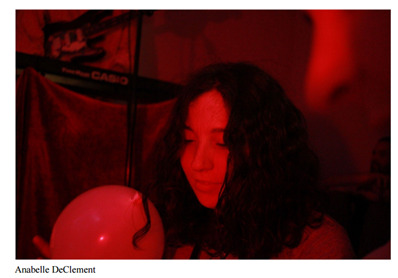

Majors: Communication and Media Studies, Anthropology and Visual Arts
Faculty Mentor: Dr. Joseph Lawton
Bio: Anabelle and Alexis were born on the same year, the same month, and one week apart. Studying visual arts and communications respectively, Anabelle and Alexis will graduate this year and continue pursuing their interests in art and media. As far as specific achievements or post-graduation employment opportunities, Anabelle and Alexis are unsure but undaunted
Abstract: Wasted Hours is a study of the underground music community in Brooklyn from an anthropological and photographic perspective. Through the combination of photography and text, we explore the inner-workings of the music community and the kinship relations that make up this alternative group. We utilize the descriptive qualities of photography and the abstract qualities of the printed word to showcase the uniqueness of this community inside of a larger, countercultural class. Above all, Wasted Hours is about the coexistence of shared experiences and subjective self-understandings.
0 notes
Text
Margaret Fisher ‘17
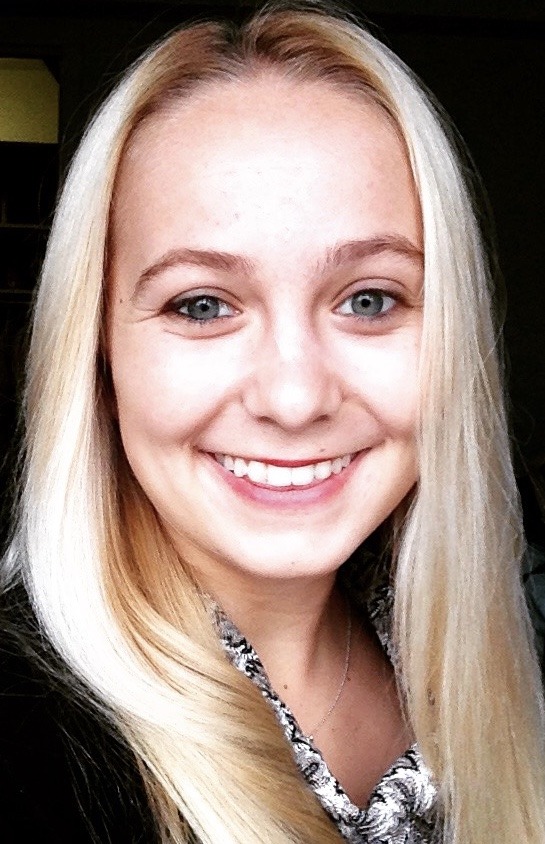
Major: Comparative Literature & Behavioral Development (Individualized Science Major)
Faculty Mentor: Dr. Frank Boyle
Title of Research: Human Story, Animal Consequence: Elephants as Complex Symbols Within the Western Literary Tradition
Bio: Margaret Fisher is a senior Comparative Literature major and Creative Writing minor. During her sophomore year, she also designed a second major, Behavioral Development, which focuses on the biological mechanisms that underlie human and animal behavior. Following the completion of her undergraduate program this spring, she plans to spend a year teaching English in Spain before enrolling in an interdisciplinary graduate program.
Abstract: Performed with the support of the Dean’s Summer Research Grant, my research proposes that the elephant, as the terrestrial counterpart to the whale/leviathan of the collective Western imagination, becomes a particularly complex symbol and character within American and British literature of the 19th and 20th centuries. Specifically, the elephant becomes a tool of colonialism and speciesism, used to assert white, Western man as the pinnacle of nature and culture. However, elephants also become narrative tools through which Western writers explore and repress existential anxiety, using the elephant as a medium through which to address questions of origin, reproduction, maturation, and death; processes which join mankind to the natural world and complicate claims of human exceptionalism. I do so primarily through a close analysis of the writings of Kipling, whose stories powerfully shaped the elephant’s representation and function within Western culture for generations, and subsequent works inspired and affected by these writings. I also explore the ways in which these 19th/20th century representations of the elephant impact the contemporary reality of the species, using the work of G.A Bradshaw to assert the ethical potentiality inherent in the process of writing the non-human.
0 notes
Text
Magdalena Valenti ‘17

Major: Women, Gender and Sexuality Studies and Sociology
Faculty Mentor: Dr. Jeanne Flavin
Title of Research: An Instrument for Evaluating Critical Pedagogy and Antiracist Principles in Diversity Syllabi
Biography: Magdalena is currently working on her senior project: a student-driven feminist consciousness group at Lincoln Center. She also tutors and mentors young people in New York
Abstract: Many universities’ curricula feature some kind of multicultural requirement. Yet in response to current events and hate crimes on campus, there is a new interest in how to address racism and injustice on campus, including through the diversity requirements. I refer to the academic literature on critical pedagogy and antiracist education to define generally what should a college level anti-racist course offering look like? I developed an assessment instrument or rubric to gauge the extent to which a syllabus reflects critical and antiracist pedagogy principles such as critical thinking, student-driven classroom methods, application to the real word and lastly a commitment to analyzing and dismantling racism. This paper and the corresponding instrument provide a practical tool to investigate a college-level syllabus and to invite a conversation about designing courses that are more anti-racist and student-driven.
0 notes
Text
Fiona Ball ‘17
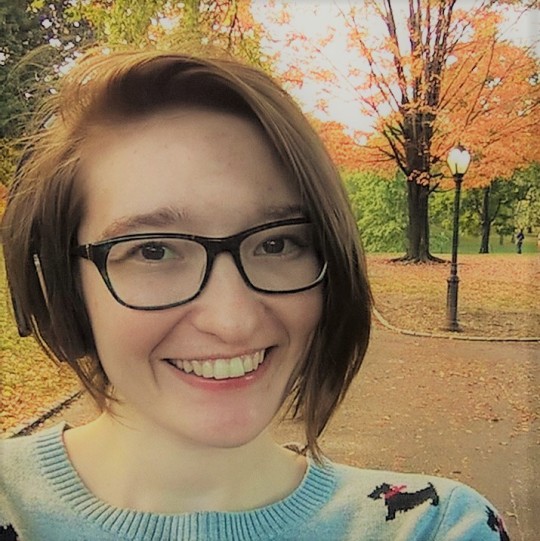
Major: Psychology
Faculty Mentor: Dr. David Glenwick
Title of Research: Religiosity, Spirituality, and Well-being in Lesbian, Gay, and Bisexual Catholics
Bio: Fiona Ball is a senior in the honors program from Maryland pursuing a career in clinical psychology, whose research interests include OCD and related disorders, scrupulosity, exposure and response prevention, gender and sexuality, and the psychology of religion. She has gained clinical and research experience at the Mount Sinai Obsessive-Compulsive and Related Disorders Program, Albert Ellis Institute, and Fordham’s Compulsive, Obsessive, & Anxiety Program.
Abstract: The purpose of this research is to investigate how religion and spirituality is related to mental well-being in Catholics who are attracted to individuals of the same sex. This study examines the relationships between well-being and intrinsic/extrinsic religious orientation, spirituality, and orthodoxy in the LGB+ Catholic population. Identity integration of individuals’ Catholic identities and sexualities is also investigated using a bicultural identity integration model. Data on these factors in a sample of gay, lesbian, bisexual, or queer Catholic individuals was collected via an online survey distributed through LGBT+ Christian websites. The study will evaluate the hypotheses that high intrinsic religiosity, spirituality, and identity integration will be correlated with high well-being, and high extrinsic religiosity and Christian Orthodoxy will be correlated with low well-being. The findings will help illuminate how religious and spiritual factors are uniquely related to the well-being of the lesbian, gay, bisexual, and queer Catholics.
0 notes
Text
Brett Taylor ‘18

Major: Integrative Neuroscience and Philosophy
Faculty Mentor: Dr. Martin Di Grandi
Title of Research: Progress on the Ring Expansion of Aziridines to Tetrahydroisoquinolines
Bio: Brett Taylor was born in Houston, Texas, but was raised in Phoenix, Arizona where he attended the Jesuit high school Brophy College Preparatory. After a lot of consideration, reflection, and ten different minors, Brett finally settled on a double major in cell and molecular integrative neuroscience and philosophy. Brett hopes to use his academic experiences to pursue medicine, research, and, ultimately, a meaningful life.
Abstract: In the battle against cancer, the public and researchers alike have sought after pharmaceuticals that selectively target rapidly dividing cancer cells. One natural product, pancratistatin, has demonstrated potent anticancer properties. This research project examines a new pathway to synthesizing the core structure of pancratistatin, specifically exploring the use of arenes N-linked to aziridines as substrates for a variety of heterocyclic products via an intramolecular Friedal-Crafts alkylation. The plan of action was to treat a benzyl aziridine fused to cyclohexane with different reaction conditions – different acids, heating methods, time left to react, etc. – to optimize the ring expansion to pancratistatin’s core structure. The ultimate goal of this research is to apply this approach to a total synthesis of the natural product.
On��g�
0 notes
Text
Anna C. Barbano ‘17
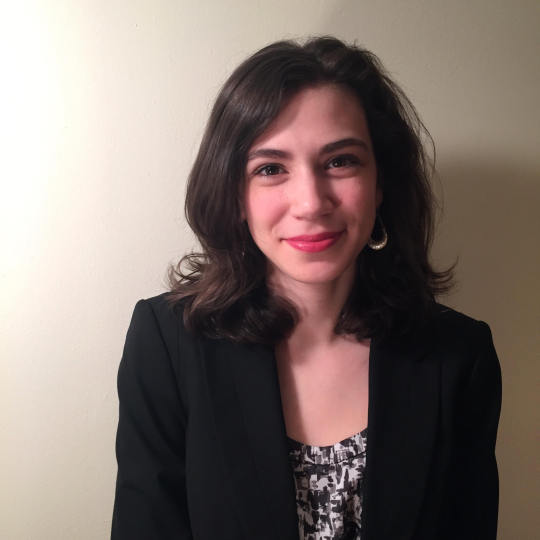
Major: Psychology
Faculty Mentor: Barry Rosenfeld
Title of Research: Comparing different approaches to the diagnosis of PTSD
Bio: Anna Barbano is a senior psychology student from Rochester, New York. When she is not researching, she is the Head of Public Relations for Fordham's Graphic Novel Readership Society and a lover of language and literature. She is ultimately interested in pursuing a Ph.D. in clinical psychology and entering a career in mental health.
Abstract: This study examined the concordance of posttraumatic stress disorder (PTSD) diagnoses using four different approaches: DSM-IV and DSM-5 criteria applied to the Harvard Trauma Questionnaire (HTQ), the clinical cut-off score of 2.5 for the HTQ, and diagnoses based on an unstructured clinical interview. We used a sample of 333 refugees living in the U.S. who sought treatment in a hospital-based multidisciplinary torture treatment center. Cohen’s kappa coefficient and tetrachoric correlation were used to assess the agreement of diagnoses based on the DSM-IV, DSM-5, HTQ cut-off score, and clinician diagnoses. Consistent with the study hypotheses, fewer participants received a diagnosis based on DSM-5 criteria than DSM-IV criteria, though the difference was very small (38.1% vs. 41.4%). The clinician diagnoses and the HTQ cut-off score both identified more cases of PTSD than either DSM algorithm (45.7% and 50.5%). There was substantial disagreement between the clinicians’ diagnoses and each of the three other indices based on the HTQ. These findings highlight the need for further research examining the factors that lead to discrepancies in the diagnosis of PTSD based on alternative approaches
0 notes
Text
Reyam Hussein ‘17
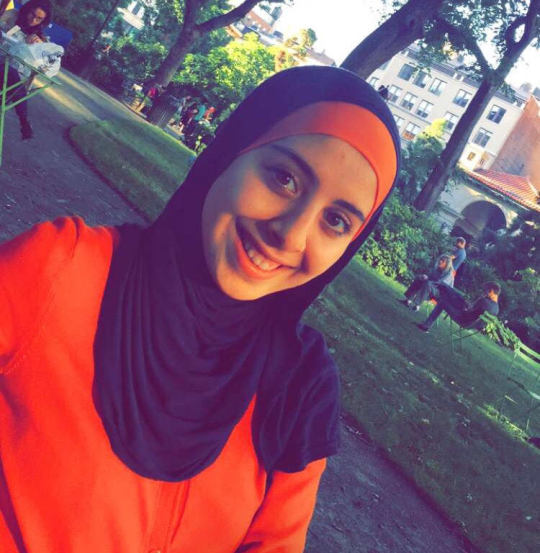
Major: Natural Science
Faculty Mentor: Dr. Guy Robinson
Title of Research: Spike and charcoal particles used as a way to measure fire frequency.
Bio: Reyam Hussein, a commuter from Brooklyn, NY. She is a Natural Science major and recently got inducted to Sigma Xi. Reyam hopes to attend medical school in New York to become a pediatrician.
Abstract: A fire occurred at Pelham Bay Park 20 years ago, which is located in the Bronx. This fire effected the areas surrounding Pelham Bay Park. The research specifically focused on areas that are within Pelham Bay park which are Twin Island and Hunter Island and the sites within these Islands. It is continuously being worked on for determining which sites within these Islands were affected the most by this fire. The way it is being determined is by counting the number of charcoal particles and spikes found in each slide collected at these sites. The spike count is a way of finding out the amount of charcoal per unit volume. This helps indicate the fire frequency and can essentially determine which site was affected by the fire the most.
0 notes